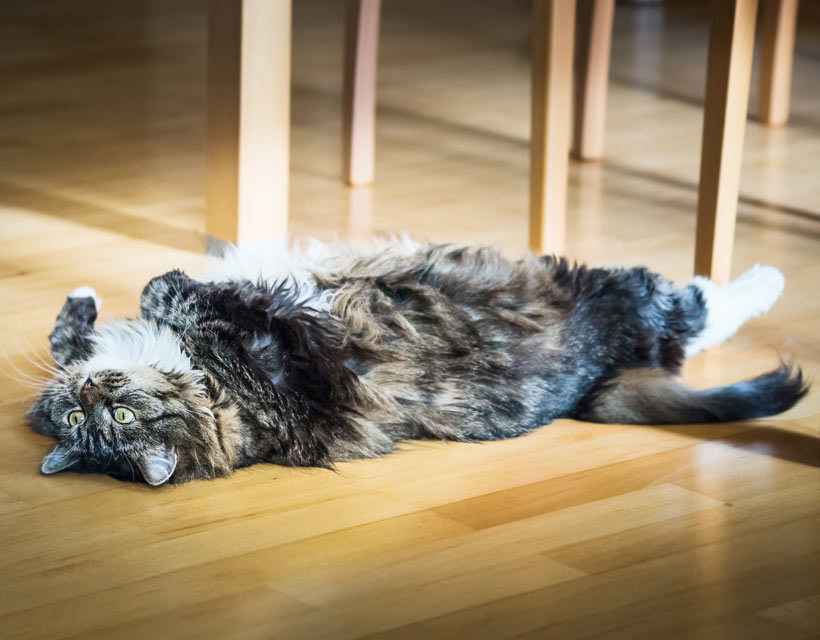Tips to Avoid Trip and Fall Accidents with Your Cat

Trip and fall accidents involving pets happens more commonly than most people would believe. Our pets love to be with us, and sometimes that means they're right underfoot when we start to move. We don't realize they're there, and we can trip and be on the ground in an instant.
Not only can trip and fall accidents happen to a cat's owners, but it can also occur with visitors to the home, who may not be used to having cats around.
While it's even more common for dogs to be involved with trips and falls than cats, it's still important to be aware of it with your cat and do what you can to avoid it.
Make It a Point to Watch for Your Cat
If your cat tends to be underfoot a lot, make it a habit to look around before you move. This can take a bit of practice, but once you make it a point to do it consistently for a few days, it should become a habit.
Adjust Your Routines
Perhaps there are certain situations into which your kitty tends to inject herself. For instance, many cats hang around nearby when their owner is working in the kitchen because they're hoping to get a taste of something that falls to the floor.
If someone in the home is particularly vulnerable to trip and fall accidents, such as a disabled or older person, keep that in mind when considering the best type of pet to get. A hyper kitten, a small dog that darts around a lot, or a very large dog that can't get out of the way quickly might not be good choices.
If you can identify times when your kitty is most likely to be under your feet and cause you to trip, you can adjust your routines to avoid it. Use baby gates, for example, to keep your cat out of the kitchen while you're cooking.
You can also provide a spot for your cat to sit and watch you from safely. So, if your cat likes to watch you cook, put a cat perch in the kitchen and give her treats and praise when she uses it.
Use a Bell to Alert You
If your cat uses stealth mode to get under your feet a lot, try putting a bell on her collar. That way, you'll always hear when she comes around, and that will help you remember to look for her before you move. Just make sure to use a breakaway collar that will come off if your cat gets into a small space and gets it caught on something.
Make Sure Your Cat Gets Enough Attention
If your kitty is underfoot a lot, it could be that she wants more attention. Make sure you spend at least 20 minutes a day playing interactively with your cat. Use wand toys to imitate prey, and make sure your kitty is getting proper exercise and attention.
You can also use puzzle toys to help your cat stay engaged and not feel bored, which may help if a cat is trying to get attention by always being under your feet as you work in the home or walk around.
You May Also Like These Articles:
How to Train Your Cat to Stay Off the Furniture
Clicker Training for Cats: Sit
How to Teach Your Cat Not to Meow to Go Outside
The Dangers of Detergent Pods for Cats
Notice: Ask-a-Vet is an affiliated service for those who wish to speak with a veterinary professional about their pet's specific condition. Initially, a bot will ask questions to determine the general nature of your concern. Then, you will be transferred to a human. There is a charge for the service if you choose to connect to a veterinarian. Ask-a-Vet is not manned by the staff or owners of CatHealth.com, and the advice given should not delay or replace a visit to your veterinarian.




